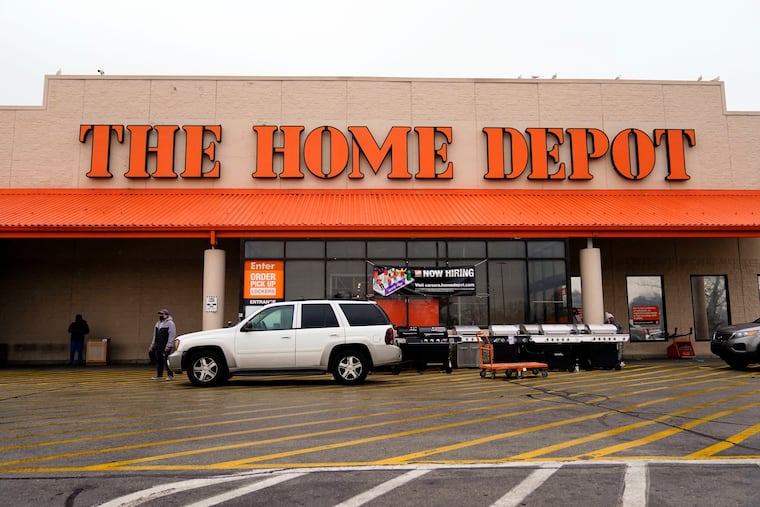Home Depot workers in Northeast Philly begin voting on whether to form retailer’s first unionized store in U.S.
More than 270 workers at the Roosevelt Boulevard store are eligible to vote starting Wednesday. The results won’t be tallied until polls close Saturday night.

Hundreds of workers began casting ballots on Wednesday to determine whether a Home Depot in Northeast Philadelphia will become the first fully unionized store for the nation’s largest home improvement retailer.
According to filings with the National Labor Relations Board, workers may vote during three time slots in the store’s training room on Wednesday and again on Saturday. A majority vote is required to form the union. Results will not be announced until ballots are counted on Saturday after the polls close at 10:30 p.m.
It’s been six weeks since workers went public with their union drive, seizing the zeitgeist of union drives that have roiled major corporations from Amazon to Starbucks. As in those cases, Home Depot has not welcomed the independent effort at 4640 Roosevelt Blvd. with open arms.
In September, more than 100 workers submitted signatures to the NLRB seeking representation for the store’s 274 merchandising, specialty, and operations associates. Vincent Quiles, the employee leading the organizing effort, said concerns around compensation and broader working conditions drove many predominantly younger employees toward the cause.
“The attitude in the store is that a change is needed,” Quiles, 27, told The Inquirer in October.
» READ MORE: Home Depot workers in Northeast Philly allege ‘surveillance,’ other union-busting tactics ahead of election
The push has been met with opposition from management.
Quiles filed a complaint with the NLRB alleging that managers had been surveilling him and his colleagues during shifts and “interrogating” them about their union activities. The federal labor board has yet to rule on the allegations. While not illegal, managers had also been holding “captive audience” sessions with small groups of employees to dissuade them from forming the union, according to Quiles.
Home Depot has said it does not view unionization as “the best solution for our associates.”
“Our open-door policy is designed to assure all associates that they can bring concerns directly to leadership, and we have a track record of working successfully with our associates to resolve those concerns,” Margaret Smith, a company spokesperson, said in a statement to the Associated Press last month.
Home Depot has successfully repelled union drives at stores in the past. The NLRB database lists three cases nationwide in which workers at Home Depot stores sought union representation, and none were successful storewide. In 2019, a group of delivery drivers at a Home Depot in San Diego successfully organized with Local 287 of the International Brotherhood of Teamsters.
If the union prevails, it could be a long, arduous road to a first contract.
New unions sometimes spend years trying to negotiate their first deal with management — and major corporations have been accused of dragging out negotiations in what some critics characterize as an attempt at dissuading union drives in other stores. But negotiations can be arduous regardless of employer. Just look at the two years of talking and 19 days of striking that it took for workers at the Philadelphia Museum of Art to secure their first contract last month.
Less than 5% of retail workers in the United States are represented by a union, according to the U.S. Bureau of Labor Statistics. But data has also shown that unionized retail workers reap increasingly higher wages over their nonunionized counterparts.